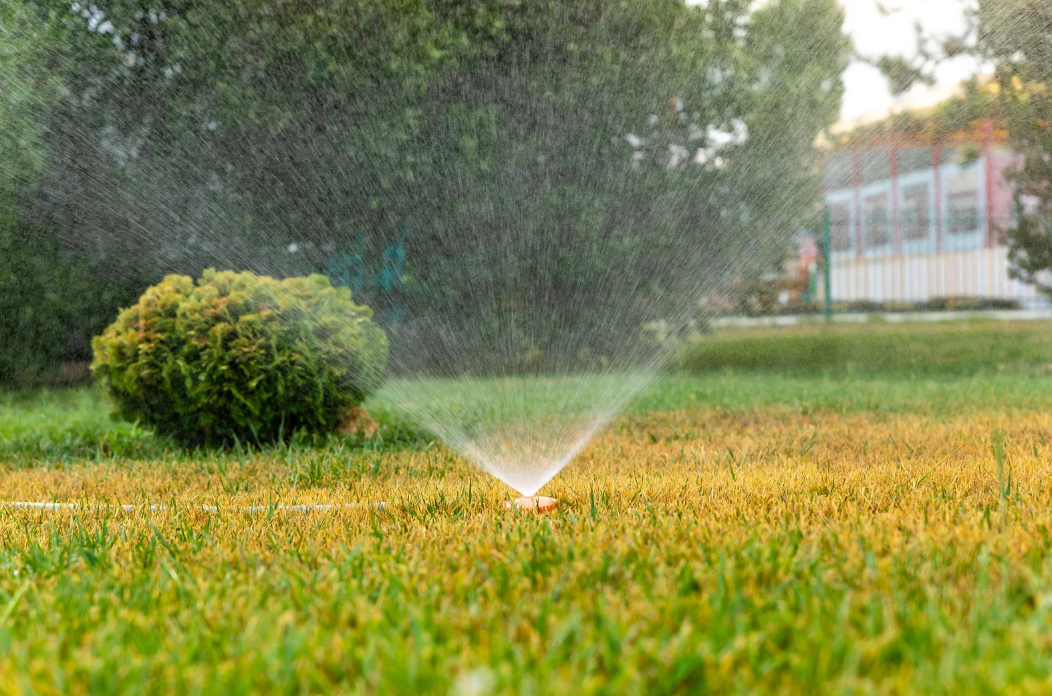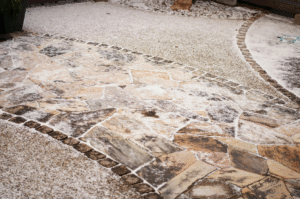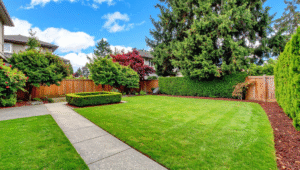Keeping your outdoor space beautiful year-round takes more than just occasional care. Each season brings new tasks that protect your investment and keep your yard thriving. Whether you prefer to handle simple upkeep yourself or rely on professional landscape maintenance services, having a clear plan helps you stay on track. Use this guide as your seasonal garden maintenance checklist to protect plants, irrigation systems, and hardscapes through every change in weather.
Spring: Cleanup and Preparation
Spring is the time to refresh your garden after the cold months. Begin by inspecting your yard for damage caused by frost or snow. Remove fallen branches, leaves, and other debris that may block sunlight or airflow. Check all hardscape areas, including patios, pavers, and retaining walls, for cracks or shifting. Early repairs prevent small issues from becoming major expenses later.
Next, focus on soil health. Test your soil’s pH and add compost or organic matter to restore nutrients. Prune dead or damaged branches to encourage healthy new growth. If you have an irrigation system, clean the filters, flush the lines, and adjust sprinkler heads before you begin regular watering. Spring is also ideal for applying pre-emergent weed control and fresh mulch around plants to retain moisture.
Spring Checklist
- Clear leaves and winter debris
- Inspect retaining walls for cracks or shifting
- Prune shrubs and trees
- Test irrigation systems for leaks or clogs
- Refresh mulch and compost
- Apply slow-release fertilizer
Summer: Watering and Monitoring
Utah summers can be hot and dry, making irrigation system maintenance especially important. Set your system to water early in the morning to minimize evaporation. Check drip lines and sprinkler heads weekly to ensure even coverage and prevent water waste. Overwatering is a common mistake—many lawns and gardens only need deep watering two to three times per week depending on soil type.
During this season, keep an eye on plant health. Look for signs of stress such as wilting, brown tips, or pests. Trim overgrown plants that block sunlight or airflow. Summer is also the best time to inspect your hardscapes for heat-related damage. Cracked pavers or faded surfaces can often be resealed or replaced before cooler weather arrives.
Summer Checklist
- Monitor soil moisture and adjust watering schedule
- Inspect irrigation system weekly
- Check for pest or disease activity
- Trim overgrown plants and remove dead blooms
- Clean and reseal patios or stone surfaces
- Deep water lawns and garden beds as needed
Fall: Repair and Reinforce
Fall is the perfect season for long-term maintenance. Cooler temperatures make it easier to work outdoors, and preparing now saves time and money next year. Begin by raking fallen leaves, which can suffocate grass and create mold if left too long. Aerate your lawn to improve air and water movement in the soil, then apply fertilizer designed for fall growth.
Inspect all retaining walls and walkways for movement or drainage issues after the summer heat. Refill joint sand between pavers and repair cracks to prevent moisture from freezing inside during winter. Trim perennials and remove dead annuals, but leave a few seed heads for birds. Apply a thick layer of mulch to protect roots from temperature swings.
Fall Checklist
- Rake leaves and clean gutters
- Aerate and fertilize lawn
- Inspect retaining walls and paver joints
- Cut back perennials and remove annuals
- Add fresh mulch for insulation
- Drain irrigation system and store hoses
Winter: Protection and Planning
Winter preparation is about protection and smart planning. Before freezing temperatures arrive, shut off and drain your irrigation system to prevent burst pipes. Wrap outdoor faucets with insulation covers and store garden hoses in a dry place. Sweep patios and walkways to remove debris that could stain or cause slips.
If you use salt or de-icing products, choose types safe for plants and concrete surfaces to avoid long-term damage. Heavy snow can stress trees and shrubs, so gently brush off branches when safe to do so. Winter is also a great time to plan improvements for the next year, such as upgrading your irrigation system or scheduling professional landscape maintenance services.
Winter Checklist
- Drain and shut off irrigation systems
- Cover faucets and store hoses
- Use plant-safe ice melt on hard surfaces
- Remove heavy snow from trees and shrubs
- Clean and protect outdoor furniture
- Plan upgrades or design changes for spring
When to DIY and When to Call a Professional
Many tasks, such as light pruning, watering adjustments, and debris cleanup, can be handled easily by homeowners. However, certain jobs are best left to professionals. Structural inspections of retaining walls, irrigation system repairs, and major plant replacements require experience and the right tools. Hiring a professional ensures these essential elements are properly maintained, saving you from costly mistakes.
Professional maintenance also helps preserve the value and appearance of your property. A well-cared-for yard not only looks better but lasts longer. With ongoing support, you can focus on enjoying your outdoor space instead of constantly fixing it.
Your Year-Round Landscape Partner
Maintaining a garden or yard is simpler when you have a plan that works for every season. Use this checklist as your guide, or print it out to keep handy throughout the year. Whether you handle maintenance yourself or want expert help, staying consistent prevents major repairs and keeps your property looking its best.
Ready for reliable year-round care?
Contact Aridscape Utah for professional landscape maintenance services that cover every season. From irrigation system maintenance to retaining wall inspection, their team keeps your garden and hardscapes in top shape all year long.



